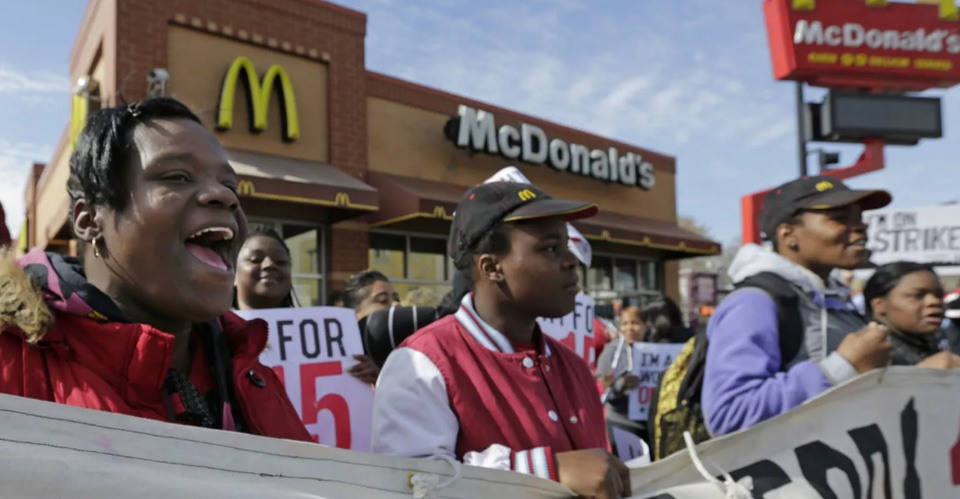
What is a strike?
The dictionary defines a strike as: “a refusal to work organized by a body of employees as a form of protest, typically in an attempt to gain a concession or concessions from their employer.”
Placed within a working-class context, a strike is one of the only (and most effective) economic weapons workers have to improve their workplace conditions and build towards real socioeconomic justice.
Historically, before the National Labor Relations Board (NLRB) was created in 1935 by the Roosevelt administration, the only way to gain union recognition and a contract was through the power of a strike, which was often times bloody.
Over time, alternative forms for resolving workplace disputes were created, and the American public began to see a sharp decline in long-term strikes.
Government administrative bodies, like the NLRB or the Federal Mediation and Conciliation Service, now play a crucial role in defending the rights of working people while simultaneously downplaying the importance of the strike in an effort to prevent disruptions to business and commerce. Arguably, this was the intended goal of the Roosevelt administration when it acquiesced to growing external pressure from unions and radical organizations – like the Communist Party, USA – for industrial and labor relations legislation as part of the New Deal.
Just think, in 1947 there were 270 strikes involving one thousand workers or more. Fast forward to 2015 and we find only 12 strikes involving one thousand workers or more. There are a number of reasons for this: decline in union membership, workplace automation, globalization, business unionism, etc. In short, traditional strike actions, like those found in history books – and which ushered in the golden age of unionism – no longer have the same effect or serve the same purpose, as our economy has fundamentally changed.
Today, traditional strikes are being replaced by intermittent strikes – usually one-day strikes with a pre-arranged return-to-work plan.
The “Fight for $15” national movement of fast food and other low-wage workers shows us that this strategy can be successful in winning workplace improvements in a non-traditional organizing campaign.
But this type of action comes with risks, too, since the NLRB has not taken a clear position as to whether or not intermittent strikes are protected activity under Sec. 7 of the National Labor Relations Act, also known as the Wagner Act, which gave workers the legal right to organize.
On October 3, 2016, the NLRB’s Office of the General Counsel, released an advice memo with a proposed standard for creating a clear distinction between an intermittent strike and a so-called partial strike.
The General Counsel proposed defining a partial strike as the concerted withholding of some aspect of labor while continuing to perform other work, and use the term intermittent strike to refer to situations where employees are not simultaneously working and striking. By creating this distinction intermittent strikes would be protected if:
(1) they involve a complete cessation of work, and are not so brief and frequent that they are tantamount to work slowdown;
(2) they are not designed to impose permanent conditions of work, but rather are designed to exert economic pressure; and
(3) the employer is made aware of the employees’ purpose in striking (for example, the “Fight for $15”).
Currently the Board does not view intermittent strikes as protected activity since they’re coordinated to harass an employer through “hit and run” tactics, and because workers seek to gain the benefits of a long-term strike without assuming the long-term economic risks.
No matter how you look at it, by maintaining this position, the Labor Board is contradicting the meaning of the strike itself, especially when viewed through a Marxist lens.
There is time to see if the Board takes any steps to revisit and update its position on intermittent strikes based on the urging of its General Counsel. However, as working conditions continue to change and organized labor continues to fight back increasingly through non-traditional collective bargaining methods, the only “real” way to ensure the Board updates its position is through direct worker action at every level.
In other words, the power of a strike isn’t going away. It’s just being updated to meet the current needs of today’s workforce.
Al Neal is the Director of Advocacy and Education for the St. Louis Workers Education Society.










